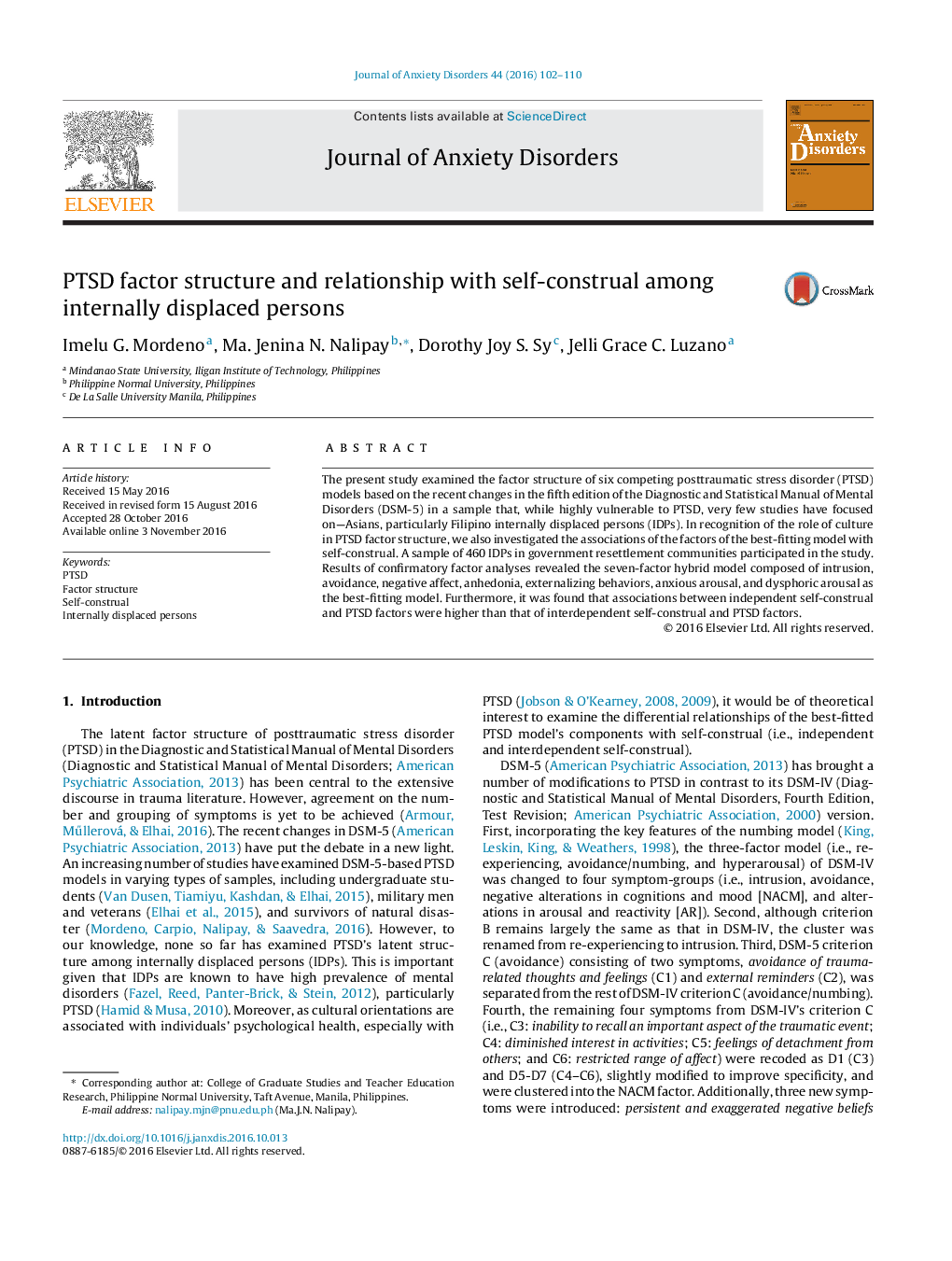| Article ID | Journal | Published Year | Pages | File Type |
|---|---|---|---|---|
| 5038958 | Journal of Anxiety Disorders | 2016 | 9 Pages |
â¢The seven-factor hybrid model of PTSD composed of intrusion, avoidance, negative affect, anhedonia, externalizing behaviors, anxious arousal, and dysphoric arousal was found to have the best fit in a sample of Asian, particularly Filipino internally displaced persons.â¢The factors of the hybrid model more strongly associated with independent self-construal than with interdependent self-construal.â¢The findings demonstrate the importance of considering the role of culture in the study of PTSD latent factor structure.
The present study examined the factor structure of six competing posttraumatic stress disorder (PTSD) models based on the recent changes in the fifth edition of the Diagnostic and Statistical Manual of Mental Disorders (DSM-5) in a sample that, while highly vulnerable to PTSD, very few studies have focused on-Asians, particularly Filipino internally displaced persons (IDPs). In recognition of the role of culture in PTSD factor structure, we also investigated the associations of the factors of the best-fitting model with self-construal. A sample of 460 IDPs in government resettlement communities participated in the study. Results of confirmatory factor analyses revealed the seven-factor hybrid model composed of intrusion, avoidance, negative affect, anhedonia, externalizing behaviors, anxious arousal, and dysphoric arousal as the best-fitting model. Furthermore, it was found that associations between independent self-construal and PTSD factors were higher than that of interdependent self-construal and PTSD factors.
